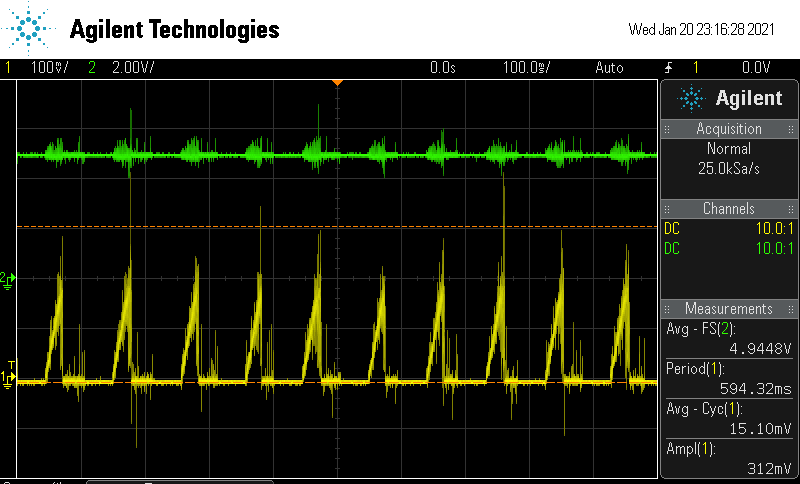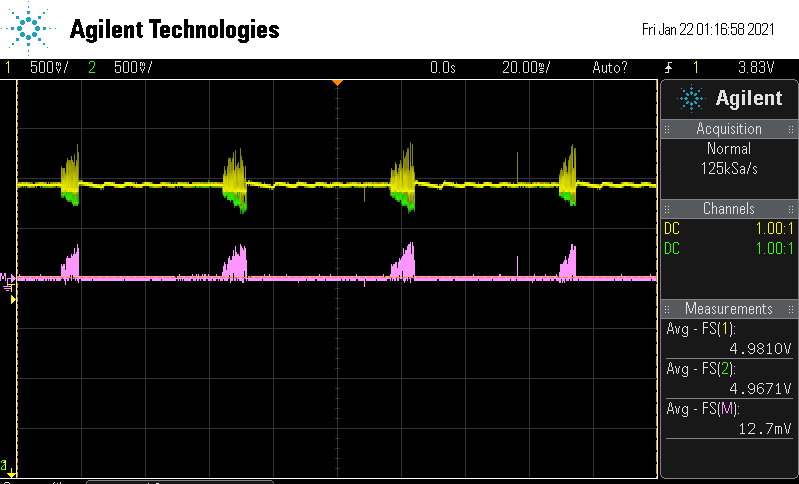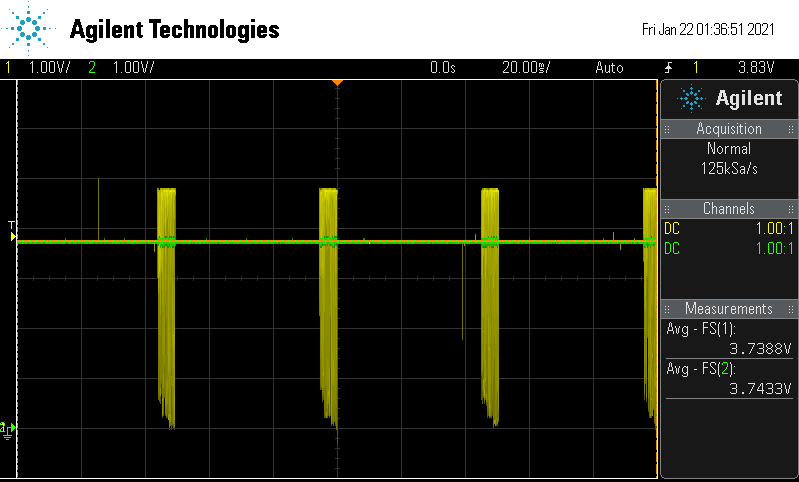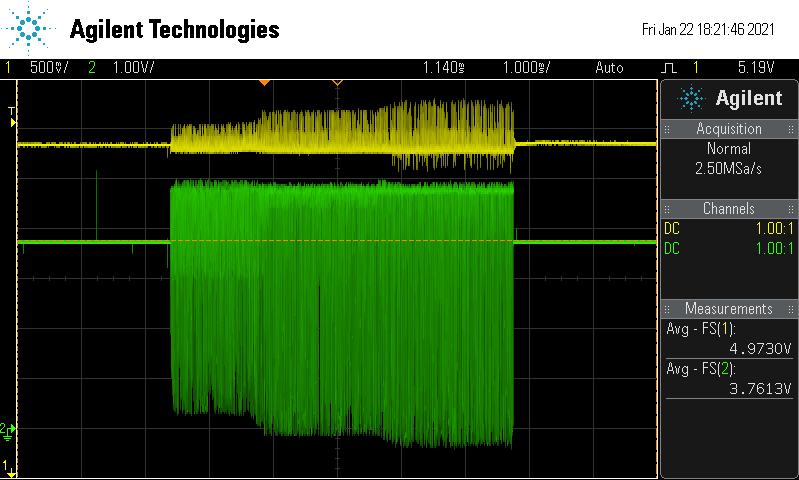Hello,
I am working on a BQ24250 application to power a 1S 2200mAh LiPo battery. I'm having issues with the current delivered to the battery which seems to be too weak, both when controlled in I2C or in standalone mode (the charging current is 20mA in average while it is supposed to be more than 500mA). I tried to simplify the schematic as much as possible to identify the issue, but I am not able to see what is going wrong. Could you please help me ?
I am attaching herewith the schematic in standalone mode, which is mostly based on datasheet. For tests purpose, the charge is simply a LED. Vin is a connected to a voltage power supply set to 5V than can deliver up to 1A. Capacitors are all MLCCs.
I put a 1Ω resistor in serie with battery in order to measure current going through the battery, as shown below (green is input, yellow is voltage on resistor).
Thanks in advance.






